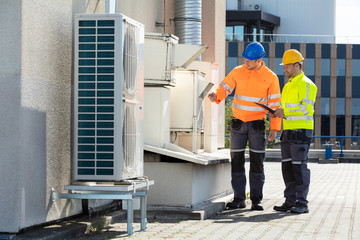When choosing a new HVAC system, consider what you need based on your climate, yearly temperatures, and comfort level. You’ll want to consider your region’s yearly climate patterns when it comes to HVAC products. For example, furnaces quickly provide hot and dry heat, while heat pumps deliver warm and cool air. The size and style of your home will play a key role in choosing an HVAC product. Make sure you have your HVAC system regularly serviced.

HVAC stands for Heating, Ventilation, and Air Conditioning. These systems move air inside your home to make the environment comfortable for the occupants. They also maintain the humidity level inside the building, regulating indoor temperatures and preventing overheating. A fan can be the perfect solution when you’re looking for a cooling and heating solution. Ceiling and floor fans circulate air around a space, making it the ideal heating and cooling solution.
Some changes that are observable during heating and cooling are irreversible. In other words, when the matter is heated, it takes on the shape of a container. If it is cooled down afterward, it will return to its original condition. In some cases, the process of cooling is reversible. During a freezing episode, a cup of water left outside can turn into ice. But the change that occurs can’t be undone.
The basis of home heating and cooling is a forced-air system. The pressure of the air in a room determines the boiling point of a liquid. The lower the pressure, the lower the boiling point. As a result, when the substance is vaporized, it absorbs heat from the surrounding area. This heat is then used to boil water. A heat pump is an excellent alternative for cooling your home. It is also highly effective at improving indoor air quality.
The main difference between cooling and heating systems is their distribution. Radiant systems use pipes to distribute heated water throughout a house. They are also known as “all-water” HVAC systems because they use pipes as distribution containers. Since water has a higher capacity for heat than air, the volume of water needed to move the heat is smaller than air. Some all-water systems also use electric heating panels, commonly installed in warm climates where electricity is cheap. However, radiant systems cannot distribute cool air from an air conditioner.
The heat transfer process is a vitally important factor in keeping your home cool. Using the right cooling strategies and learning how heat transfers between a person and an object is crucial to cool your home. Three main processes transfer heat: conduction, radiation, and convection. These processes help your body to cool down as you are warm. If you want to keep your home cool and comfortable, you should look at these three processes and implement them into your home.
In addition to the energy efficiency of your HVAC equipment, consider its AFUE rating. Heating equipment like furnaces and boilers have an AFUE rating, which stands for Annual Fuel Use Efficiency. Most units are 90-percent AFUE, while a lower-efficiency model may only be 20 percent SEER. Efficiency is essential in both comfort and efficiency, so you’ll want to select the most efficient unit for your home.
Besides the air filter, the air return system is crucial as it marks the starting point of the ventilation cycle. The air return pump pulls air through a coiled steel bar and a magnet. The magnet pulls up on a contact arm in the tube and closes the contacts, completing the electrical circuit and turning on the heater or anticipator. You can choose to add features like an electric resistance coil or an air purifier if you’d like.
Products help you keep your home’s temperature at an ideal level, no matter the season. While the primary focus is on HVAC/R contractors, they welcome all businesses for their maintenance product needs. They are always ready to help you out with any questions you have.